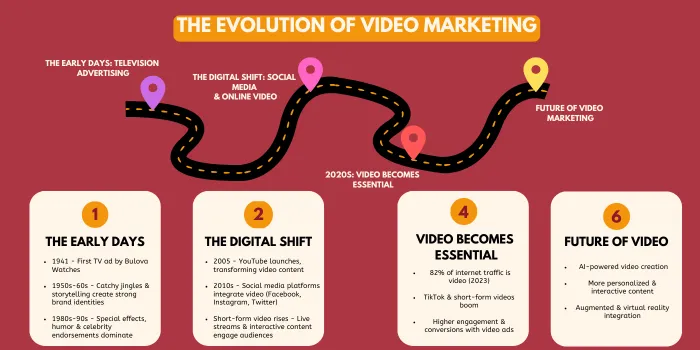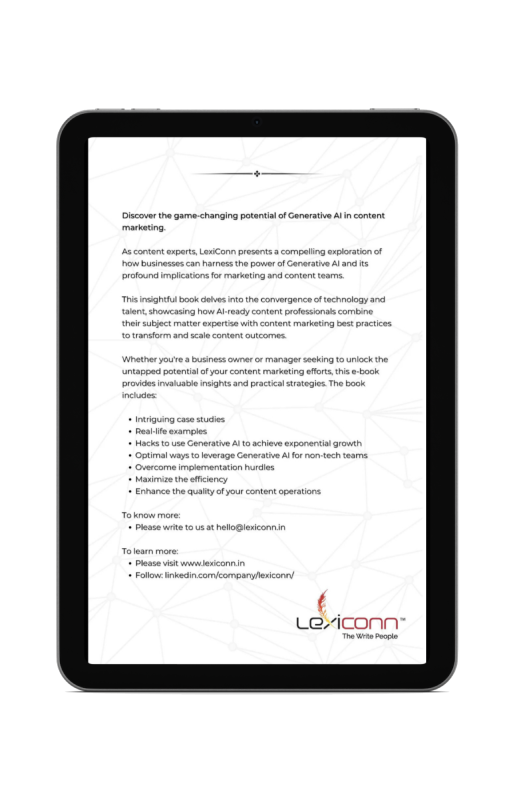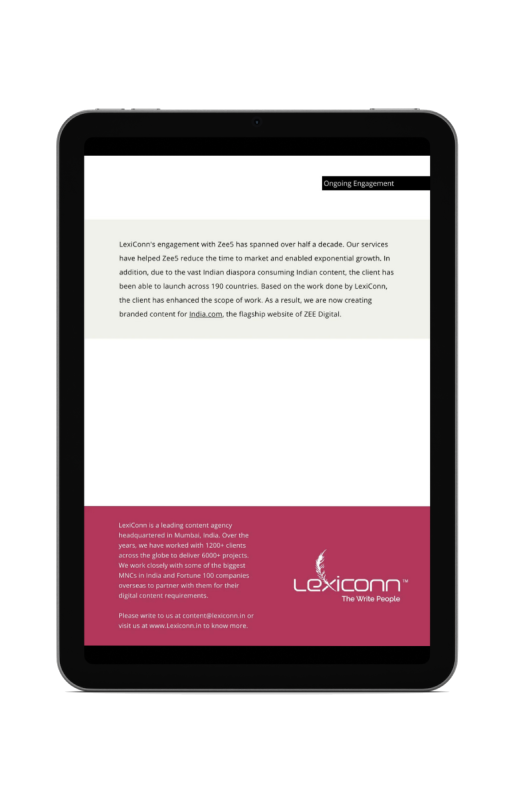Source
Not long ago, a strong personal brand meant polished resumes, keynote speeches, and the occasional media appearance. Today? If you’re not on video, you’re invisible. Video has become the language of influence, and in 2025, it’s no longer optional—it’s the gold standard for business leaders looking to establish authority, connect with audiences, and drive impact.
Whether it’s a 60-second LinkedIn clip or a long-form YouTube discussion, executives who embrace video are positioning themselves as thought leaders, while those who ignore it risk fading into the background.
But how did we get here? Before highlight the importance of video for branding,, let’s examine how video has evolved into the powerhouse it is today.
The Evolution of Video Marketing
Video marketing has transformed dramatically, from its early days on television to becoming a dominant force in digital advertising. Here’s a look at how it has evolved over the years.
The Early Days: Television Advertising
1941: The First TV Commercial
- Bulova Watches aired the first-ever TV ad, marking the beginning of video marketing.
1950s – 1960s: The Rise of Jingles and Brand Identity
- Advertisers used catchy jingles and slogans to create memorable brand experiences.
- Storytelling became a key strategy, making ads more engaging.
1980s – 1990s: High-Production Commercials and Celebrity Endorsements
- Brands incorporated special effects, humor, and drama to capture attention.
- Celebrity endorsements became a powerful marketing tool.
- TV advertising revenue continued to grow, reaching billions in annual spending.
The Digital Shift: Social Media and Online Video Marketing
2005: The Birth of YouTube
- YouTube revolutionized content consumption, allowing businesses and creators to share videos globally.
2010s: The Social Media Boom
- Facebook, Instagram, and Twitter integrated video, making it a core part of online marketing.
- Brands experimented with live videos, interactive content, and behind-the-scenes storytelling.
- Shorter video formats gained traction, appealing to audiences with shrinking attention spans.
2020s: Video Becomes Essential for Marketing
- By 2023, video made up over 82% of all consumer internet traffic.
- TikTok’s rapid growth popularized ultra-short, engaging videos.
- Businesses saw higher engagement and conversions with video-based advertising.
Key Trends That Redefined Video Marketing
Video marketing is evolving at a rapid pace. Businesses that adapt to these trends will stay ahead, while those that ignore them risk losing relevance.
1. Short-Form Video Dominates
Short-form content has become the most effective format for audience engagement. Platforms like TikTok, Instagram Reels, and YouTube Shorts have capitalized on the fact that users prefer quick, attention-grabbing videos. The shorter the video, the more likely viewers are to watch until the end, boosting retention rates.
- Why it works: Short-form videos align with shrinking attention spans and the increasing need for digestible content.
- How brands are using it: Businesses leverage these formats for product demos, behind-the-scenes glimpses, and quick storytelling to create brand awareness.
2. Targeting Younger Audiences
Millennials and Gen Z are driving the demand for video-first content. Traditional TV consumption has declined as younger generations prefer snackable content on mobile devices.
- Why it works: Younger audiences are digital natives who rely on social media for entertainment, shopping, and brand discovery.
- How brands are using it: Influencer marketing, interactive Q&A sessions, and user-generated content help brands create authentic connections.
3. Mobile Optimization and Vertical Video
With most internet users consuming video on smartphones, brands are prioritizing mobile-first content strategies.
- Why it works: Vertical videos take up the full screen on mobile devices, providing an immersive experience. Square videos also perform better on social platforms like Instagram and Facebook.
- How brands are using it: Brands now design videos specifically for vertical and square formats rather than repurposing horizontal content. This ensures a seamless viewing experience
4. The Rise of VR and AR in Marketing
Immersive experiences are reshaping video marketing. Virtual reality (VR) and augmented reality (AR) are becoming tools for storytelling, allowing brands to engage customers in unique ways.
- Why it works: Interactive videos help brands provide hands-on experiences, enhancing engagement and brand recall.
- How brands are using it: E-commerce brands use AR for virtual try-ons, while real estate and tourism sectors use VR for virtual tours.
Why Leaders Must Adapt Video Content in 2025
Content consumption has shifted, with video now taking the spotlight. With shorter attention spans and a preference for engaging, visual content, business leaders need to rethink how they present themselves and their brands. In 2025, video marketing is no longer optional.
Video Is Essential for Executive Branding
Consumers and professionals alike trust people more than faceless corporations. Video gives executives the chance to put a face to their brand, building trust and authority in a way that text and static images simply can't. Whether through LinkedIn, YouTube, or Instagram Reels, short and compelling videos can make a lasting impact.
A well-crafted video can:
- Humanize leadership and make executives more relatable.
- Establish credibility by sharing industry insights.
- Strengthen a personal brand by showcasing expertise.
How to Create Engaging Leadership Videos
For business leaders looking to step into executive video branding, here are a few strategies:
1. Keep It Authentic
Authenticity is one of the most critical elements of executive branding. People trust leaders who show their true personalities rather than those who rely on scripted corporate jargon. A natural approach fosters trust and relatability.
How to implement it:
- Speak directly to the camera as if you’re having a conversation with a colleague or mentee.
- Use personal anecdotes or real-life experiences to make your message more engaging.
- Show emotion and passion—your enthusiasm for your topic will resonate with viewers.
- Keep production simple; even smartphone-recorded videos can be effective if they feel genuine.
2. Provide Value
People watch videos that help them solve problems, gain knowledge, or see a new perspective. If your videos consistently provide value, your audience will keep coming back.
How to implement it:
- Address common industry challenges and share solutions.
- Offer leadership advice based on your experience.
- Share behind-the-scenes insights, such as company culture, decision-making processes, or lessons from failures.
- Create bite-sized knowledge clips where you break down complex topics into simple, digestible points.
3. Use Engaging Storytelling
Storytelling transforms a regular message into a memorable experience. Stories help humanize leadership, making visual content more relatable and engaging.
How to implement it:
- Start with a compelling hook—a question, a surprising fact, or a personal experience.
- Follow a simple structure: introduce a challenge, explain the process of overcoming it, and end with key takeaways.
- Incorporate real-life case studies or testimonials to reinforce your message.
4. Keep It Concise
Attention spans are short, so your message should be clear and to the point. A focused, concise video keeps viewers engaged and ensures your message is absorbed.
How to implement it:
- Stick to one key topic per video rather than overwhelming viewers with too much information.
- Aim for 1–3 minutes for most leadership videos, reserving longer formats for in-depth discussions.
- Use on-screen text or visuals to highlight key points without unnecessary fluff.
5. Optimize for Social Media
Different platforms have different video preferences, and leaders should adapt their visual content accordingly. The way people consume video on LinkedIn differs from TikTok or YouTube. A strategic approach increases engagement.
How to implement it:
- Use vertical formats for Instagram Reels, TikTok, and YouTube Shorts.
- Add captions, as many users watch videos without sound.
- Include a call to action, such as asking viewers to comment, share, or follow.
6. Be Consistent
Building authority through video requires a long-term commitment. Consistency helps establish credibility and keeps your audience engaged. Regular visual content builds familiarity, making people more likely to recognize and trust you.
How to implement it:
- Set a schedule—whether it’s weekly, biweekly, or monthly, stick to a timeline.
- Repurpose visual content—turn one video into multiple clips, blog posts, or social media posts.
- Analyze what works—track engagement and adjust based on audience feedback.
7. Maintain Visual Authority
Quality matters. A poorly lit, shaky video can diminish credibility. Investing in good lighting, clear audio, and professional editing will elevate your brand’s presence.
- Develop a Strong Narrative: Authentic storytelling in leadership videos creates deeper connections with the audience.
- Use High-Quality Production Tools: Clear visuals and crisp audio make a lasting impression.
- Engage with Your Audience: Live streaming and interactive videos allow for direct engagement and transparency.
- Be Consistent Across Platforms: Optimize videos for YouTube, LinkedIn, Instagram, and other key channels to maintain a cohesive brand identity.
What Business Leaders Must Do to Strengthen Their Visual Authority
1. Invest in Video Marketing
High-quality, consistent video content positions business leaders as industry experts and increases their reach. Consumers are more likely to trust and engage with brands that have a visible, relatable presence. Video marketing allows executives to communicate their vision, insights, and expertise directly.
How to implement it:
- Regularly create visual content such as leadership insights, company updates, and thought leadership videos.
- Invest in professional video production or high-quality self-recording setups for a polished look.
- Maintain a consistent posting schedule across LinkedIn, YouTube, and other relevant platforms.
2. Leverage AI and Automation
AI-driven tools simplify video creation and editing, making it easier for leaders to maintain an active video presence. AI-powered editing tools, script generators, and automated captions reduce the time and effort needed for video production.
How to implement it:
- Use AI-driven platforms like Descript or Synthesia for quick edits and transcriptions.
- Automate content distribution using scheduling tools like Buffer or Hootsuite.
- Experiment with AI-generated avatars and voiceovers for consistent branding across different languages and markets.
3. Monitor Performance Metrics
Tracking video analytics helps leaders refine their visual content strategy and understand what resonates with their audience. Engagement rates, watch time, and conversions reveal what visual content is most effective and where improvements are needed.
How to implement it:
- Use YouTube Analytics, LinkedIn Insights, and other platform metrics to assess video performance.
- Pay attention to audience retention—where viewers drop off can indicate areas for improvement.
- A/B test different video formats and styles to see what drives the best engagement.
4. Stay Ahead of Trends
Short-form videos, reels, and interactive visual content are dominating video marketing, and leaders must adapt to these formats. In 2025, audiences engage more with dynamic and easily digestible visual content. Staying relevant requires embracing evolving trends.
How to implement it:
- Create quick, engaging leadership snippets for Instagram Reels, TikTok, and YouTube Shorts.
- Experiment with interactive video formats such as live Q&A sessions or behind-the-scenes footage.
- Stay updated on emerging trends like 360-degree videos, virtual reality experiences, and AI-generated storytelling.
Video Branding in 2025: The Competitive Edge
Businesses that integrate video into their marketing and leadership strategy will stand out in a crowded digital space. Executives who embrace video content will:
- Increase audience engagement and brand loyalty.
- Strengthen their online presence and professional reputation.
- Stay ahead of competitors who rely solely on traditional content.
With video becoming the dominant visual content format, business leaders who adapt will maintain relevance and influence in their industries. If you haven’t started incorporating video into your executive branding strategy, now is the time.
With video becoming the dominant visual content format, business leaders who adapt will maintain relevance and influence in their industries.
At LexiConn, we help brands create impactful video marketing strategies that drive results. From scriptwriting to production and optimization, we ensure your videos engage, convert, and grow your audience.
Boost your Content Strategy.
Download the Free eBook now.
Unlock Generative AI's potential for content marketing success. Unearth its impact on teams and businesses. Witness real-life examples and case studies, showcasing AI-driven content ingenuity.







